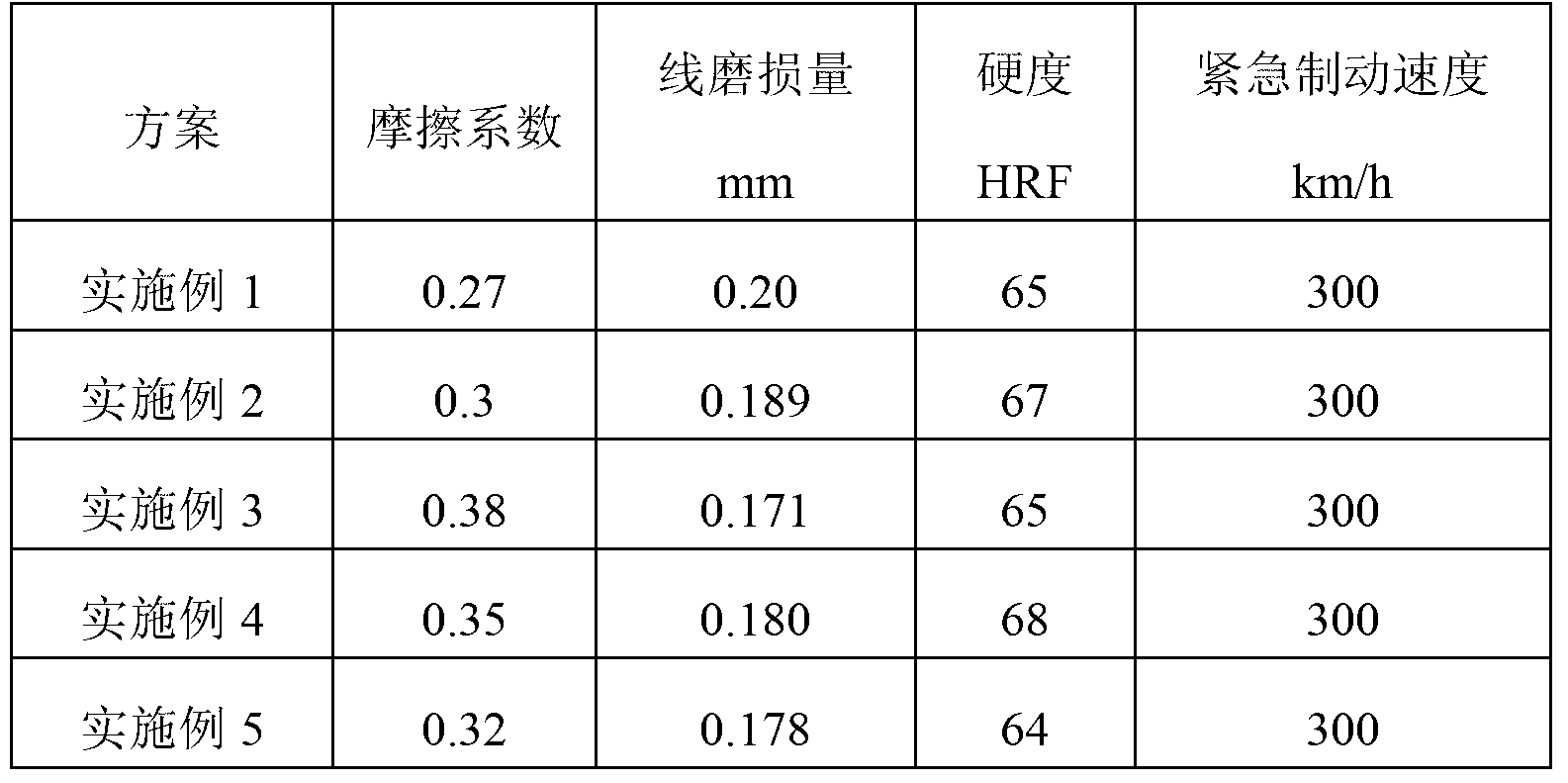Dispersion-strengthened copper-based powder metallurgy brake pad and preparation for same
A dispersion-strengthened copper and dispersion-strengthened technology, applied in mechanical equipment, friction linings, etc., can solve the problems of increased dual wear, large changes in friction coefficient, and large braking noise, and achieves good fatigue performance and wear resistance. The effect of small hardness change with temperature and comprehensive performance improvement
- Summary
- Abstract
- Description
- Claims
- Application Information
AI Technical Summary
Problems solved by technology
Method used
Image
Examples
Embodiment 1
[0025] 1. Will Al 2 o 3 Powder, SiO 2 Sieve the powder with 100 mesh, and sieve the remaining powder with 200 mesh, set aside;
[0026] 2. The various powders by weight ratio: 50% dispersion strengthened copper powder, 20% Fe powder, 4% C powder, 10% SiO 2 powder, 7%Sn powder, 3%Pb powder, 6%MoS 2 Pour the powder into the container and stir briefly, and a small amount of binder can be added;
[0027] 3. Pour the mixed powder into a V-shaped or double-cone mixer, add a small amount of iron wire, and take it out after mixing for 10 hours;
[0028] 4. Put the evenly mixed powder into the cold pressing mold according to the calculated weight and cold press molding, the cold pressing pressure is 2t / cm 2 , and ensure that the height of the blank after forming is consistent;
[0029] 5. Put the cold-pressed parison and the copper-plated steel back into a hot-pressed sintering furnace, heat to 700°C, pressurize and sinter under the protective atmosphere of hydrogen or nitro...
Embodiment 2
[0032] 1. Will Al 2 o 3 Powder, SiO 2 Sieve the powder with 100 mesh, and sieve the remaining powder with 200 mesh, set aside;
[0033] 2. Put various powders in weight ratio: 60% dispersion strengthened copper powder, 12% Fe powder, 12% C powder, 3% SiO2 Powder, 1%Al 2 o 3 powder, 3%Sn powder, 2%Pb powder, 7%MoS 2 Pour the powder into the container and stir briefly, and a small amount of binder can be added;
[0034] 3. Pour the mixed powder into a V-shaped or double-cone mixer, add a small amount of iron wire, and take it out after mixing for 15 hours;
[0035] 4. Put the evenly mixed powder into the cold pressing mold according to the calculated weight and cold press molding, the cold pressing pressure is 3t / cm 2 , and ensure that the height of the blank after forming is consistent;
[0036] 5. Put the cold-pressed parison and copper-plated steel back into a hot-pressed sintering furnace, heat to 800°C, pressurize and sinter under the protective atmosphere of hy...
Embodiment 3
[0039] 1. Will Al 2 o 3 Powder, SiO 2 Sieve the powder with 100 mesh, and sieve the remaining powder with 200 mesh, set aside;
[0040] 2. Put various powders in weight ratio: 70% dispersion strengthened copper powder, 5% Fe powder, 15% C powder, 1% SiO 2 Powder, 3%Al 2 o 3 powder, 1%Sn powder, 1%Pb powder, 4%MoS 2 Pour the powder into the container and stir briefly, and a small amount of binder can be added;
[0041] 3. Pour the mixed powder into a V-shaped or double-cone mixer, add a small amount of iron wire, and take it out after mixing for 20 hours;
[0042] 4. Put the evenly mixed powder into the cold pressing mold according to the calculated weight, and cold press molding, the cold pressing pressure is 4t / cm 2 , and ensure that the height of the blank after forming is consistent;
[0043] 5. Put the cold-pressed parison and the copper-plated steel back into a hot-pressed sintering furnace, heat to 900°C, pressurize and sinter under the protective atmosphere...
PUM
 Login to View More
Login to View More Abstract
Description
Claims
Application Information
 Login to View More
Login to View More - R&D
- Intellectual Property
- Life Sciences
- Materials
- Tech Scout
- Unparalleled Data Quality
- Higher Quality Content
- 60% Fewer Hallucinations
Browse by: Latest US Patents, China's latest patents, Technical Efficacy Thesaurus, Application Domain, Technology Topic, Popular Technical Reports.
© 2025 PatSnap. All rights reserved.Legal|Privacy policy|Modern Slavery Act Transparency Statement|Sitemap|About US| Contact US: help@patsnap.com

